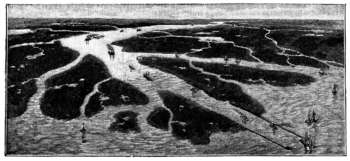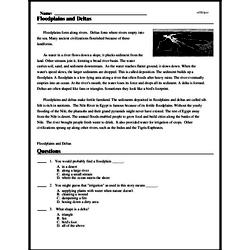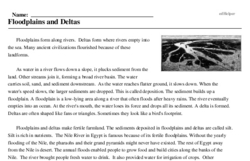Floodplains and Deltas
Floodplains form along rivers. Deltas form where rivers empty into the sea. Many ancient civilizations flourished because of these landforms.
As water in a river flows down a slope, it plucks sediment from the land. Other streams join it, forming a broad river basin. The water carries soil, sand, and sediment downstream. As the water reaches flatter ground, it slows down. When the water's speed slows, the larger sediments are dropped. This is called deposition. The sediment builds up a floodplain. A floodplain is a low-lying area along a river that often floods after heavy rains. The river eventually empties into an ocean. At the river's mouth, the water loses its force and drops all its sediment. A delta is formed. Deltas are often shaped like fans or triangles. Sometimes they look like a bird's footprint.
Floodplains and deltas make fertile farmland. The sediments deposited in floodplains and deltas are called silt. Silt is rich in nutrients. The Nile River in Egypt is famous because of its fertile floodplains. Without the yearly flooding of the Nile, the pharaohs .....




